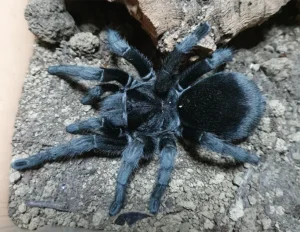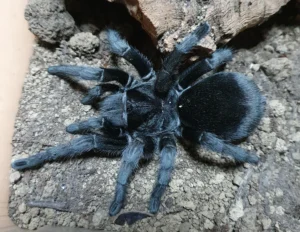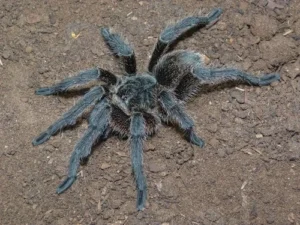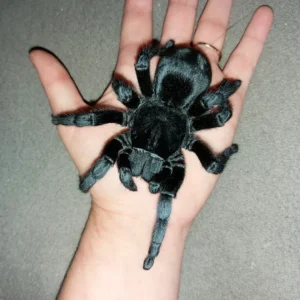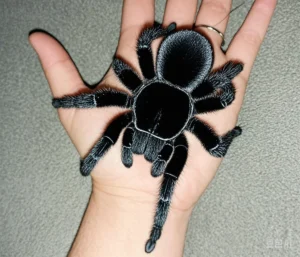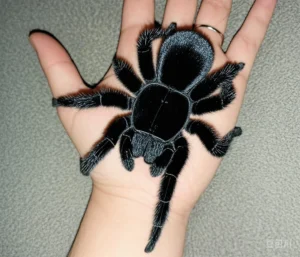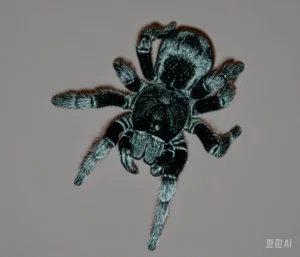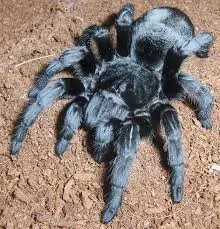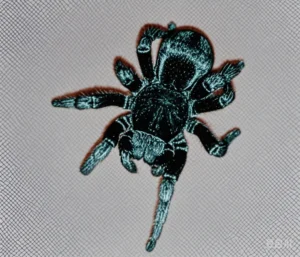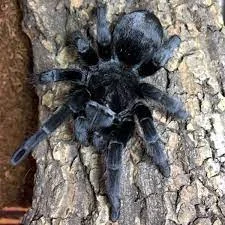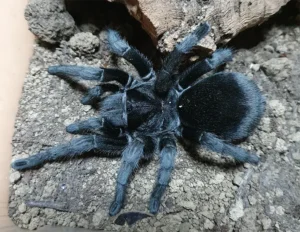Skin Sensitivity to Touch in Grammostola pulchra: Mechanoreceptor Distribution
While often described as having “skin,” a tarantula’s outer layer is a chitinous exoskeleton or cuticle. This cuticle is far from inert; it is embedded with a complex array of sensory structures that make Grammostola pulchra exquisitely sensitive to touch, vibration, and air currents. This sense, known as mechanoreception, is arguably its most important for navigating and interpreting the world.
Mechanoreception: The Primary Sense
Mechanoreception is the detection of mechanical stimuli such as pressure, vibration, and distortion. For a creature with poor eyesight like a tarantula, detecting physical forces in its immediate environment is crucial for:
- Detecting prey movement through substrate vibrations.
- Sensing potential threats or predators.
- Navigating in darkness within its burrow or during nocturnal activity.
- Interpreting air currents which might indicate nearby movement.
- Potentially sensing aspects of courtship interactions (e.g., drumming by males).
Sensory Setae (Hairs)
The most obvious sensory structures are the numerous setae (hairs) covering the tarantula’s body and legs. While some hairs provide insulation or are involved in defense (urticating hairs), many are directly linked to nerve cells and function as mechanoreceptors. When a seta is bent or moved by direct contact or vibration, it triggers a nerve impulse.

Trichobothria: Detecting Air Currents
A specialized type of mechanoreceptive seta is the trichobothrium. These are very fine, long hairs set in socket-like bases, allowing them to move with even the slightest air current or low-frequency vibration. They are particularly abundant on the legs and pedipalps.
- Function: Detect airborne vibrations (sound) and subtle air movements, such as those caused by a flying insect or an approaching object.
- Sensitivity: They are incredibly sensitive, providing the tarantula with a form of “hearing” or remote touch detection.
Understanding [how tarantulas perceive touch](https://www.lopehare.com/tarantula-medical-information/) involves appreciating the role of these specialized structures.
Slit Sensilla: Detecting Vibrations & Stress
Embedded within the cuticle itself are microscopic slits or groups of slits known as slit sensilla (or lyriform organs when grouped). These are not visible externally without magnification.
- Function: These organs detect stress and strain within the exoskeleton caused by substrate vibrations (e.g., prey walking nearby) or the tarantula’s own movements. They are highly sensitive vibration detectors.
- Location: Found all over the body but are particularly concentrated near leg joints, allowing the tarantula to precisely sense forces acting on its limbs.
Distribution of Receptors
Mechanoreceptors are distributed across the tarantula’s body, but densities are highest in areas that constantly interact with the environment:
- Legs and Pedipalps: Extremely rich in tactile setae, trichobothria, and slit sensilla. The tips of the legs (tarsi) are particularly sensitive, constantly sampling the substrate.
- Chelicerae and Mouthparts: Possess receptors for manipulating prey and sensing food texture.
- Body (Carapace and Abdomen): Also covered in sensory setae, providing awareness of contact from all directions.
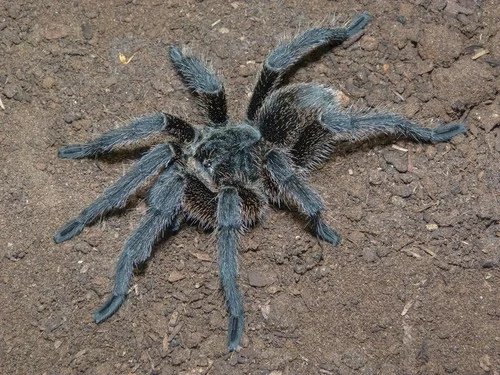
Implications
The high sensitivity to touch and vibration explains several tarantula behaviors:
- Startle Response: Sudden touch or strong vibration often triggers a defensive reaction (fleeing, threat pose).
- Handling Stress: Handling can be overwhelming due to the flood of unfamiliar tactile stimuli, contributing to stress.
- Substrate Importance: Their ability to interpret vibrations makes substrate type potentially important for their sense of security and prey detection in captivity.
The world of a Grammostola pulchra is primarily perceived through intricate patterns of touch, vibration, and air currents detected by a sophisticated array of mechanoreceptors distributed across its exoskeleton.
References:
- Foelix, R. F. (2011). *Biology of Spiders* (3rd ed.). Oxford University Press. (Detailed information on arachnid sensory organs)
- Wikipedia contributors. (Accessed 2023). Trichobothrium. *Wikipedia, The Free Encyclopedia*. https://en.wikipedia.org/wiki/Trichobothrium
- Barth, F.G. (2002). *A Spider’s World: Senses and Behavior*. Springer. (In-depth coverage of spider sensory biology).

